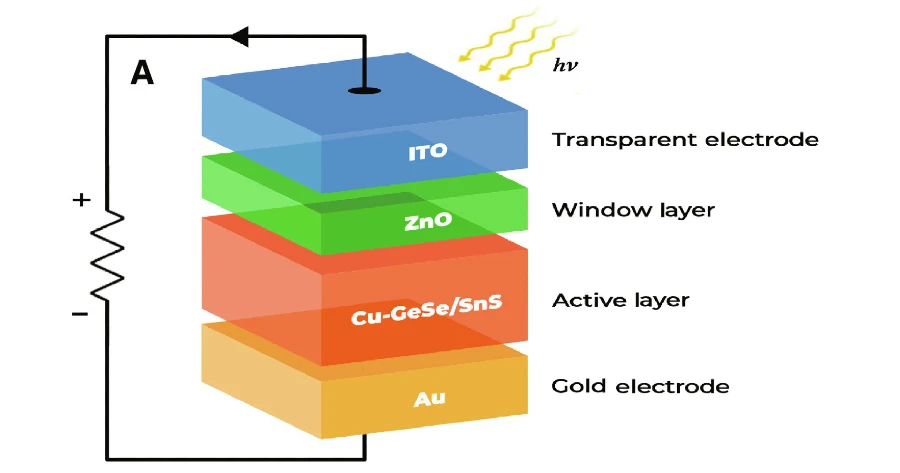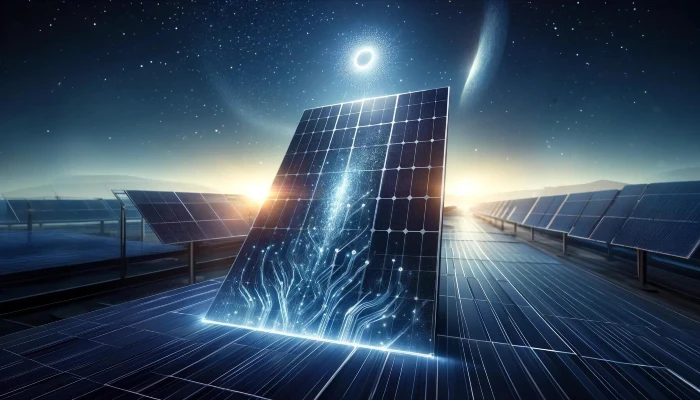Just imagine: It’s a sunny day, and your phone is charging faster than it takes to brew your morning coffee, all thanks to the sunlight streaming through your window. This isn’t a scene from a sci-fi movie, but the future promised by a mind-blowing discovery in solar technology. Thanks to the brains at Lehigh University, led by the visionary Professor Chinedu Ekuma and PhD student Srihari M. Kastuar, we’re on the brink of a solar revolution that could make our current solar panels look like ancient relics.
“This work represents a significant leap forward in our understanding and development of sustainable energy solutions. Highlighting innovative approaches that could redefine solar energy efficiency and accessibility in the near future,” says Professor Ekuma, lighting up the path to a greener planet.


What’s the Magic?
Forget everything you know about solar panels. Today’s models, as great as they are, still let a lot of sunlight go to waste. But imagine a solar panel so advanced, it nearly doubles the power we can harness from the sun. The secret sauce? Something called “intermediate band states.” Think of them as little energy catchers that grab and convert light to power more efficiently than ever before. It’s like having a superpower that catches energy slipping away and puts it right back into the grid.
The real game-changer comes from sneaking atoms of zerovalent copper into the mix. These atoms are like ninjas, slipping into tiny spaces between layers of special materials and boosting how much power the panel can produce. It’s as if we’ve been using regular old batteries for our solar panels, and Professor Ekuma’s team just handed us the ultimate power pack.
“Its rapid response and enhanced efficiency strongly indicate the potential of Cu-intercalated GeSe/SnS as a quantum material for use in advanced photovoltaic applications, offering an avenue for efficiency improvements in solar energy conversion,” Ekuma said.

Bringing It to Your Rooftop
While the thought of your electric bill plummeting is exciting, don’t rush to replace your rooftop panels just yet. This is cutting-edge stuff, and there’s a bit more wizardry needed to make it ready for your home. But the cool part? The way they’re making these super panels is already top-notch. Scientists have gotten good at adding these power-boosting atoms exactly where they need to go.
Let’s talk big picture. Solar energy is already doing heavy lifting in powering our world, with the sun beaming down more energy in an hour than humanity uses in a year. And with solar power growing faster than any other renewable source, we’re on the cusp of something huge. Last year, solar power outpaced even wind energy, marking a giant leap towards cleaning up our energy act.
More To Discover
- The First Lithium-Free, Sodium Battery EV Will Hit the Roads in January, Proving A Game Changer for the Auto Industry and Environment
- Microplastics in the Clouds: New Study Reveals Potential Threat to Global Weather Patterns
- There Are Trillions of Tons of Clean Power Beneath U.S. Soil
- Shell Backtracks Its Climate Goals Again, Surprising No One
Thanks to the backing from the U.S. Department of Energy, Professor Ekuma’s work isn’t just a cool science project—it’s the blueprint for our sustainable future. So, while you might not be charging your phone with quantum solar power tomorrow, that day is coming. And when it does, you’ll be saying goodbye to energy bills that break the bank and hello to a planet that’s a little healthier and a lot happier. This isn’t just a step forward; it’s a giant leap for mankind’s fight against climate change.
While this represents massive progress in solar energy and efficiency, one very important question remains… what’s the life expectancy of these panels? Will these new, innovative panels last considerably longer than the current panels now piling up in landfills around the world? We don’t have an answer to that question yet, but we have reason to hope.





















